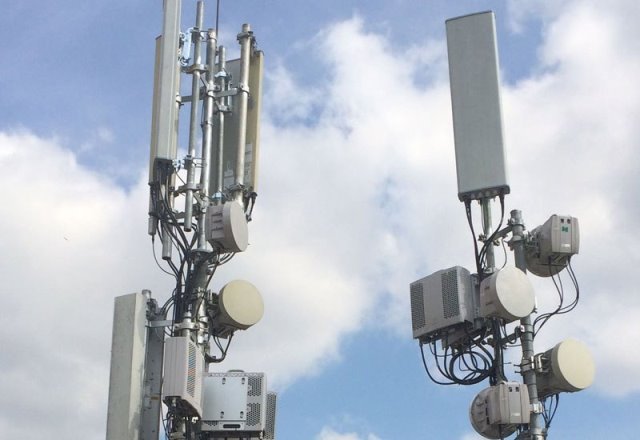Caroline Gabriel, Partner and expert in network and cloud strategies and architecture, and Rupert Wood, Research Director and expert in network infrastructure, at Analysys Mason, have revealed reasons behind the recent decline in operator Capex worldwide.

Rupert Wood of Analysys Mason in the report noted that a convergence of two major trends — fibre build and the initial 5G rollout — led to a peak in capex intensity around 2022, but spending is now clearly declining. Fibre build has dominated capex, especially in Europe, in recent years, but it is a one-time investment with a long asset life.
In contrast, 5G represents the last in a series of generational technology investments. Among the 50 largest operators that spend over USD 1 billion annually on capex, spending is decreasing across the board, though some East Asian companies continue investing in businesses adjacent to telecoms.
In developing markets, capex is still growing, particularly in the lowest-income areas. Some operators, particularly fibre-poor cable companies, face difficult investment decisions—whether to self-overbuild with fibre or invest heavily in DOCSIS 3.1 or DOCSIS 4.0.
In the U.S., fixed broadband remains strong for now, supported by incoming Broadband Equity, Access, and Deployment (BEAD) funding.
There is also a shift from large integrated operators toward a growing number of smaller alternative network providers (altnets).
Capital spending has, to some extent, moved from traditional operators to specialist infrastructure businesses such as TowerCos and FibreCos, but even in these sectors, capex appears to be peaking. While carve-outs and neutral host players can improve the economics of fibre-to-the-premises (FTTP) projects, network companies ultimately operate in the same demand-driven environment as traditional telecom operators.
Traffic
Data traffic remains a key factor in operator decision-making, though it is only one way to measure demand. At the core of every operator’s business is the production and sale of bandwidth, with capacity being stretched by total traffic volume and peak bandwidth demand. Fixed broadband traffic growth is slowing, with growth in the teens at best. In Europe, broadband traffic growth is estimated at 12 percent in 2024, partly due to increasing broadband connections.
Mobile traffic growth is declining in many countries, with some advanced markets seeing per-subscriber growth drop to zero. In Europe, mobile traffic growth is estimated at 15 percent in 2024, stronger than in many other regions. However, fixed-wireless access (FWA) plays a significant role in these numbers. In 2023, CTIA reported 36 percent growth in mobile network traffic, but when excluding FWA, mobile device traffic growth falls to single digits. This trend is also seen in advanced mobile markets like Japan, Korea, Finland, and China.
IP traffic growth is now primarily driven by fixed broadband rather than mobile. Fixed broadband traffic remains around six times higher than mobile globally. The biggest factor influencing mobile traffic volume and growth is the lack of, or unaffordability of, fixed broadband — especially fibre — rather than any intrinsic demand for mobile data itself.
Mobile apps and devices perform just as well on fixed Wi-Fi, reducing the need for mobile network data. As wireline penetration increases and fewer people rely solely on mobile connectivity, fixed broadband will continue to limit mobile traffic growth, rather than the other way around. This shift means that searching for intrinsic drivers of mobile traffic growth is increasingly unproductive.
New applications will emerge, but they are unlikely to drive a major spike in investment in the capex-intensive access parts of networks. While AI has the potential to significantly increase traffic on long-distance and metro networks, it is not expected to impact access networks in the same way. Technologies like XR and connected vehicles may still influence investment, but the available network capacity has expanded significantly, reducing the urgency for major new spending.
The idea that increasing data traffic or bandwidth demand directly drives capex is somewhat of a myth. While this relationship may be more relevant in mobile networks than in fixed broadband, it is not as strong as often assumed. Mobile networks represent only about 25 percent of telecom capex in Europe, and 5G has accounted for roughly 20 percent of capex in the region, with a slightly higher share globally. This means mobile investment is not as dominant within overall telecom spending as many believe.
Strategies
Telecom operators have strategic opportunities around scale, including the potential to buy back stakes in infrastructure that were previously carved out. However, instead of repurchasing them outright, they could spread investment across geographies through equity stakes in what are often fragmented regional markets. Many fixed networks are now owned by infrastructure funds, and operators are strategically buying back into these assets.
Network businesses can also explore investments in adjacent industries such as data centers, edge computing, and computility. Other potential areas include electric vehicle (EV) charging infrastructure, local renewable power generation, and distribution networks, all of which align with telecoms’ core expertise in network management and connectivity.
Another approach is to rethink past trends of operators consolidating within their strongest markets while avoiding transnational expansion. Instead, telecoms could shift towards transnational consolidation, particularly in the B2B TechCo space, by acquiring specialized businesses or skill sets. Investing in technology and workforce skills could also be a crucial way to strengthen their competitive position.
Baburajan Kizhakedath
